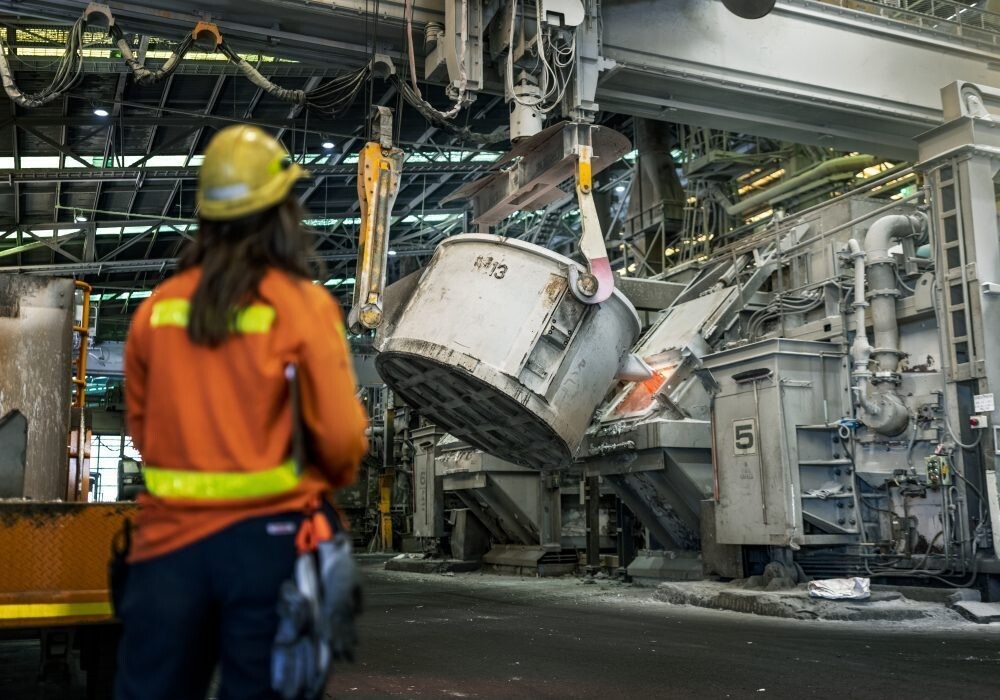

Australia, despite sitting on vast natural gas reserves, now finds itself staring down the barrel of not one, but two energy crises, one gripping the east coast and the other looming over Western Australia. Amid the turmoil, Nationals Senator Matt Canavan took a swipe at Rio Tinto's green energy ambitions, cheekily suggesting the strategy had left its Tomago aluminium smelter, one of the country's largest, on its knees.

Australia's biggest aluminium producer, Rio Tinto-owned Tomago facility, in early July, sought billions of dollars in public funds, with the aim of nipping the bud collapse as the local aluminium industry began to face the energy cost crisis.
The New South Wales (NSW) government has confirmed it is in talks to prevent the potential collapse of the giant Tomago aluminium smelter, which is battling soaring power costs and a patchy supply of renewable energy. Premier Chris Minns emphasised the plant's significance, calling it a strategic asset not just for NSW, but for the nation as a whole.
The workers at the Tomago smelters were informed on Monday that the plant could shut down by 2028 or even earlier, unless a new, affordable energy deal is secured, with both state and federal government support on the table to keep the operation alive.
On the contrary to this, Queensland National Senator Matt Canavan on his respective X profile started a side-by-side panel highlighting the 2021 report of Tomago's push towards a renewable-based power supply by 2029, mocking it with a simple caption stating, "How it started .... How it is going".
Moreover, in a conversation with Sky News Australia, the Senator condemned the Albanese government and their agenda of renewable energy, stating that the policy undertaken would bring the domestic industry and the manufacturing facilities to a standstill.
According to him, till the time the energy prices are subdued, smelting facilities like Tomago would become a part of the large-scale industrial facilities list, which are on the road to shut down. One of his statements highlighted, "Net Zero is just not working"
Located north of Newcastle, the producer consumes roughly 12 per cent of NSW's electricity and produces about 37 per cent of Australia's primary aluminium. Its collapse could deliver a heavy blow to the economy, with over 1,000 direct jobs at risk and a further 5,000 indirect roles potentially caught in the fallout.
The smelter, jointly owned by Rio Tinto, CSR and Hydro Aluminium, is in direct talks with NSW Premier Chris Minns and federal officials to secure a multi-billion-dollar lifeline. However, the rescue package is expected to be far more intricate than a straightforward government handout.
Earlier this year, the CEO of Rio Tinto, Jakob Stausholm, sounded the alarm over Tomago's soaring electricity costs, warning that post-2028 power contracts could make the operation unviable. In June, Premier Chris Minns admitted it was "difficult to speculate about what next steps are," even as unions and industry groups pressed the NSW government to secure the smelter's future.
Meanwhile, the Albanese government is pushing ahead with its plan to shift Australia's USD 5.1 billion aluminium industry onto a renewable energy grid to meet its 43 per cent emissions reduction target by 2030. In January, the Prime Minister announced USD 2 billion in production tax credits for the nation's four largest aluminium smelters to support the green transition.
In light of this, the production forecasts of the Australian aluminium industry have taken a hit with alumina output for 2024-25 and 2025-26 projected to slip to approximately 16.39 million tonnes and 16.28 million tonnes, respectively, primarily due to the curtailment of operations at the Kwinana refinery.
What's driving the pain? Skyrocketing wholesale gas prices, more than double since 2019, have slammed costs upward. Woodside's pricing is up 96 per cent and Santos' 68 per cent since 2020. These increases bite especially hard at the energy-hungry Bayer refining process that cranks out alumina.
Western Australia's energy price crisis is no minor hiccup as it's a full-blown squeeze on the alumina-to-aluminium pipeline, denting output forecasts, eroding profit margins and threatening the financial backbone of a key export industry.
Also read: Australia powers up: PM announces $2 billion boost to green aluminium revolution
Note: To feature your brand and share insights, contribute an article or interview in our forthcoming e-magazine "Sustainability & Recycling: Aluminium's Dual Commitment"
Responses








